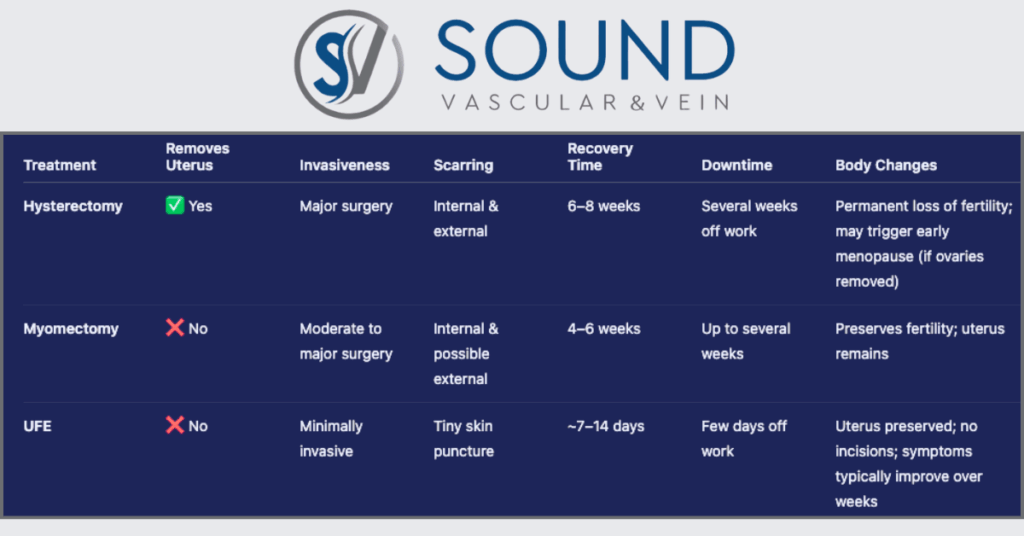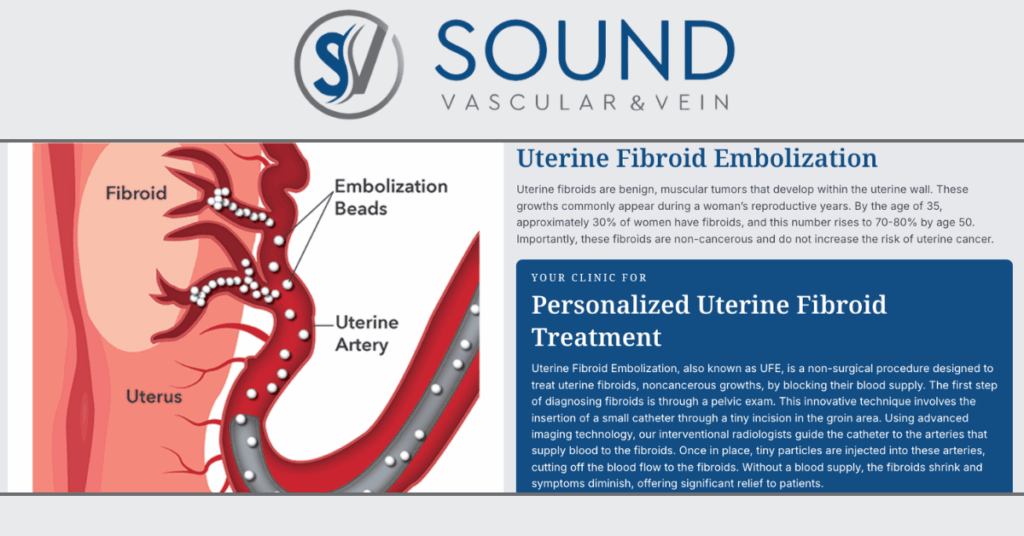If you’ve been told surgery is your only option for treating fibroids, it’s time for a second opinion. You have other choices – safe, effective treatments that don’t require removing your uterus or putting you through a long recovery.
Uterine fibroids are common, and while they’re not cancerous, they can cause serious symptoms that impact your everyday life: heavy bleeding, pelvic pain, frequent urination, pain during sex, and even infertility.
Too often, surgical removal is the first treatment offered – but it’s not your only option. Relief is possible without major surgery.
In this post, we’ll explore your fibroid treatment options and show how uterine fibroid embolization is offering women an effective, non-surgical solution to regain control over their health.
Surgery Isn’t Your Only Option
Uterine fibroids are non-cancerous growths that affect as many as 8 in 10 women by the age of 50.
For many years, the most common response to fibroid symptoms has been surgery – specifically hysterectomy, which removes the uterus entirely. And while hysterectomy may be appropriate in some cases, a recent survey found that fewer than 1 in 5 women with fibroids were informed about less invasive options before being advised to undergo surgery.
This is important because, for many patients, fibroid symptoms can be effectively treated without the need for major surgery or removing the uterus.
Common fibroid treatment options include:
- Medication – to help control symptoms like heavy bleeding or pain (not a cure).
- Myomectomy – a surgery that removes fibroids while keeping the uterus intact.
- Hysterectomy – a major surgery that removes the uterus entirely, eliminating future fibroid growth. But it also ends fertility and requires significant recovery.
- Uterine Fibroid Embolization (UFE) – a minimally invasive, outpatient procedure with no surgical incision and a fast recovery.
At Sound Vascular & Vein, we believe you deserve more than a one-size-fits-all solution. Our team takes the time to walk you through every available option – including non-surgical treatments like UFE that can relieve symptoms without the need for major surgery.
Not sure where to start? The comparison chart below breaks down the key differences between common treatment paths so you can make an informed, confident decision.

What Is Uterine Fibroid Embolization?
Uterine fibroid embolization (UFE) is a non-surgical treatment that works by cutting off blood flow to the fibroids, causing them to shrink naturally over time.
Here’s how the procedure works:
- A catheter is placed through a small needle-poke in the wrist or groin
- Tiny particles are guided into the arteries feeding the fibroids
- Once blood supply is blocked, the fibroids begin to shrink, relieving pressure and pain
Patients go home the same day, and full recovery typically takes about a week, compared to 4–6 weeks for a hysterectomy.
Is UFE Safe?
Yes. UFE is FDA-approved, has been used for over 25 years, and is considered safe and effective for treating most types of fibroids. It’s also covered by most insurance plans.
How Does UFE Compare to Myomectomy?
Both myomectomy and UFE are uterus-sparing treatments, but they work in very different ways:
Myomectomy is a surgical procedure that physically removes fibroids from the uterus. It’s often recommended for patients who are trying to preserve fertility and plan to become pregnant soon.
Uterine fibroid embolization is a non-surgical, image-guided procedure that shrinks fibroids by cutting off their blood supply. It’s ideal for patients looking for long-term symptom relief without the risks, incisions, or recovery time that come with surgery.
Which option is best for you depends on your symptoms, goals, and overall health.

Is UFE Right for You?
You may be a candidate for UFE if you:
- Want to avoid surgery or preserve your uterus
- Have heavy bleeding, pelvic pain, or bladder pressure
- Don’t plan on becoming pregnant in the immediate future
- Have multiple fibroids or fibroids that are difficult to remove surgically
- Are seeking a faster recovery with less risk than major surgery
If you’re considering pregnancy soon or have specific reproductive goals, a myomectomy may still be recommended. Our team can help evaluate your case and guide you toward the right solution for your body and your future.
Let's Talk About Your Options
You don’t have to settle for surgery. Today, there are proven alternatives that treat fibroids effectively – without removing your uterus or putting you through a long recovery.
Uterine fibroid embolization offers real, lasting relief. And for many patients, it’s an option they wish they’d heard about sooner.
Whether you’re exploring treatment for the first time or looking for a second opinion, we’re here to help you understand your options and take the next step with confidence.
Schedule your consultation or call (253) 874-7107 to speak with our team.
